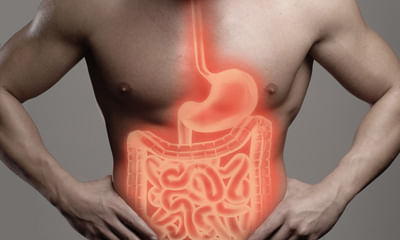Functional Dyspepsia Symptoms
After many tests doctor diagnosed functional dyspepsia and he also told that this disease has no cure and he prescribed ...
Ask Free Question
Respected lybrate-user, Hi Welcome to Lybrate.com * Functional dyspepsia management is mainly multi modality approach, based on the evaluation of individual factors with co relation of the supportive data as ultrasound, endoscopy reports.* Suggestions for better recovery - Always maintain hydration with liquids more in sessions.- Prefer soft, light bland diet till possible.- Avoid oily, spicy,non veg, hot beverages, junk foods, dairy fat.- Regular walking in fresh air, deep breathing exercises, YOGA help a lot.- Avoid stress, anxiety.- Try to manage sound regular sleep of 8 hours.- Proton pump inhibitors with bulk forming laxatives, green leafy veg, organic fresh fruits, whole grains, cereals,pulses, legumes,fresh curd are your main healers.- Avoid smoking, alcohol if using. Hope this will help you for sure. Welcome for any further guidance. Regards dear take care.
Hello Lybrate docs I have a question to ask that how and when to take triphala ras of vaidyanath brand. ...
Ask Free Question
Triphala juice from Baidyanath contains the goodness of Triphala, a mixture of amla, bibhitaka and haritaki. This herbal medicine acts as an astringent and mild laxative. It tones up the function of digestive system and relieves constipation and other symptoms associated with it like loss of appetite, heaviness in abdomen etc. It is useful in dyspepsia, diarrhea, piles, impurity of blood and haemorrhage. It is also indicated in eye diseases. This pure juice contains many vitamins and minerals beneficial for our body. It comes in a 1 litre bottle. Triphala Churna can be taken in dosage of 3 to 5 grams (around 1 tsp.) with warm water for losing weight. It can be taken 2 to 3 times a day.
I am a mbbs ist years student @ my digestive system is very bad @whenever I eat I feel like I need to expel out somethin ...
Ask Free Question
I think that you are suffering from Functional dyspepsia (FD), it is chronic disorder of sensation and movement (peristalsis) in the upper digestive tract. Peristalsis is the normal downward pumping and squeezing of the esophagus, stomach and small intestine, which begins after swallowing. We call this disorder functional there are no observable or measurable structural abnormalities found to explain persistent symptoms. You might hear other terms used to the describe condition, such as non-ulcer dyspepsia, pseudo-ulcer syndrome, pyloro-duodenal irritability, nervous dyspepsia, or gastritis. The cause of functional dyspepsia is unknown, however, several hypotheses could explain this condition even though none can be consistently associated with Functional Dyspepsia (FD). Excessive acid secretion, inflammation of the stomach or duodenum, food allergy, lifestyle and diet influences, medication side effects, psychological factors. So ,you should consult with a gastroenterologist for proper diagnosis and proper guidance. Good luck.
Suffering with ibs-c. Abdomen pain relieve by defecation Altered stool frequency but not stool form. Headache relieved b ...
Ask Free Question
Please Don't worry Take filtered water only Take very simple and light food for 3 weeks Take Tab himcospas by Himalaya 30 1 1 Tab diarex by Himalaya 30 1 1 Kutjarishta 20 ml twice a day Vidangarishta 20 ml twice a day Re Consult me on Lybrate 5 days.
What is the symptoms of happititas b and I have pain in my liver and chest and what should I do. ...
Ask Free Question
Jaundice, flatulence, dyspepsia, bloating, nausea, upper abdominal pain are the symptoms of hepatitis. Please get liver function test and usg whole abdomen done.
I have a major problem in my stomach. When I ate something their is a little pain in my stomach. Please tell me a perfec ...
Ask Free Question
Hello lybrate-user nonulcer stomach pain is a term used to describe signs and symptoms of indigestion that have no obvious cause. Nonulcer stomach pain is also called functional dyspepsia or nonulcer dyspepsia. Nonulcer stomach pain is common and can be long lasting. Nonulcer stomach pain can cause signs and symptoms that resemble those of an ulcer, such as pain or discomfort in your upper abdomen, often accompanied by bloating, belching and nausea. Risk factors factors that can increase the risk of nonulcer stomach pain include: drinking too much alcohol or too many caffeinated beverages smoking taking certain medications, especially certain over-the-counter pain relievers, such as aspirin and ibuprofen (advil, motrin ib, others), which can cause stomach problems make changes to your diet changes to your diet and how you eat might help control your signs and symptoms. Consider trying to: eat smaller, more-frequent meals. Having an empty stomach can sometimes produce nonulcer stomach pain. Nothing but acid in your stomach may make you feel sick. Try eating a small snack, such as a cracker or a piece of fruit. Avoid skipping meals. Avoid large meals and overeating. Eat smaller meals more frequently. Avoid trigger foods. Some foods may trigger nonulcer stomach pain, such as fatty and spicy foods, carbonated beverages, caffeine, and alcohol. Chew your food slowly and thoroughly. Allow time for leisurely meals. Reduce stress in your daily life stress-reduction techniques may help you control your signs and symptoms. To reduce stress, spend time doing things that you enjoy, such as hobbies or sports. Relaxation therapy or yoga also may help. Rx asta churna 1/2_0_1/2tsp with buttermilk b/f shanka vati 1_1_1 with warm water b/f amla ras 10 ml_0_0 diluting in one cup water empty stomach for 20 days. Above medicines are available only in ayurvedic pharmacy.
I am a 72 year old male who is suffering from COPD and am looking for a Homeopathic solution or course to help me breath ...
Ask Free Question
Chronic obstructive pulmonary disease (COPD) is characterized by chronic airflow limitation that is not fully reversible and an abnormal inflammatory response in the lungs. The latter represent the innate and adaptive immune responses to a lifetime of exposure to noxious particles, fumes and gases, particularly cigarette smoke. All cigarette smokers have inflammatory changes within their lungs, but those who develop COPD exhibit an enhanced or abnormal inflammatory response may result in mucous hyper-secretion (chronic bronchitis), tissue destruction (emphysema), disruption of normal repair and defense mechanism causing small airway inflammation (bronchiolitis) and fibrosis. These pathological changes result in increased resistance to airflow in the small conducting airways and increased compliance and reduced elastic recoil of the lungs. This causes progressive airflow limitation and air trapping, which are the hallmark features of COPD. There is increasing understanding of the cell and the molecular mechanism that result in the pathological changes found and how these lead to physiological abnormalities and subsequent development of symptoms. What are the causes of a COPD exacerbation? These are two very common causes of COPD exacerbation: Lung infections, such as bronchitis and pneumonia. Infections are the most common cause of COPD exacerbations and are usually caused by a virus, but they can also be caused by bacteria. Lung irritation from dust, fumes, and other sources of air pollution. When you experience a COPD exacerbation, there is a dramatic increase in mucus production in your lungs as well as narrowing of the airways of the lungs a (bronchial tubes). The increased mucus production and airway narrowing decrease the air flow in the lungs, worsening the symptoms of cough and shortness of breath. Other cases of COPD exacerbations include heart failure, allergic reactions, accidental inhalation of food or stomach contents into the lungs, and exposure to temperature changes or chemicals. In about one third of COPD exacerbations, doctors cannot find a cause. The most common symptoms seen in COPD are breathlessness, cough and fatigue. There is no good correlation between lung function and symptoms of COPD, not even the standardized scoring of breathlessness correlates well with FEV; the important message being that a simple physiological measure can never substitute a symptom history. Breathlessness Breathlessness is the most significant symptom in COPD and it is associated with significant disability, poor quality of life and poor prognosis. Cough and Sputum Production Cough is respiratory defense mechanism protecting the airways and cough is the major method of clearing excess mucus production. In COPD patients, cough as a symptom is almost as common as breathlessness and may actually precede the onset of breathlessness. Cough is usually worse in the morning but seldom disturbs the patient’s sleep; it can, nevertheless, be disabling because of the embarrassment felt by many patients when they have bursts of productive cough on social occasions and may contribute to the isolation often imposed on patients due to breathlessness. Wheezing Wheezing is generally seen as an asthma symptom but frequently occurs in COPD as well. However, nocturnal wheeze is uncommon in COPD and Suggests the presence of asthma and/or heart failure. Fatigue Fatigue is frequently reported by COPD patients. Other symptoms Chest pain is a common complaint in COPD, mostly secondary to muscle pain. However, it should be noted that ischemic heart disease is frequent in any population of heavy smokers and COPD patients may be at particular risk. Acid reflux occurrence is also frequent in COPD. Ankle swelling may result from immobility secondary to breathlessness or as result of right heart failure. Anorexia and weight loss often occurs as the disease advances and should be mirrored by measurements of body mass index (BMI) and body composition. Psychiatric morbidity is high in COPD, reflecting the social isolation, the neurological effects of hypoxemia and possibly the effects of systemic inflammation. Sleep quality is impaired in advanced disease and this may contribute to neuropsychiatric comorbidity. How is COPD diagnosed? The diagnosis is largely made on the clinical grounds in patients who have smoked. It is confirmed by demonstrating airflow obstruction that shows little day to day or diurnal variation and minimal response to bronchodilators. Airflow obstruction can only be accurately showed by spirometry rather than by measuring peak flow rates. Many patients will only present at the time of an exacerbation and will be unaware that they have a chronic illness. Some will have had a cough or been breathless for some time but will not have recognized that these were symptoms of a lung condition. It is often only in retrospect that patients realize that they have been breathless on exertion or have had a productive cough for several years. Many smokers have a morning cough that they regard as normal for them and become breathless on exertion, which they regard as a part of normal ageing. Age is risk factor for COPD and the presence of symptoms suggestive of a diagnosis of COPD in patients under the age of 40 should raise the possibility of an alternative diagnosis or an unusual etiology such as a-1 antitrypsin deficiency. Homeopathic treatment of COPD symptoms Homeopathy is one of the most popular holistic systems of medicine. The selection of remedy is based upon the theory of individualization and symptoms similarity by using holistic approach. This is the only way through which a state of complete health can be regained by removing all the sign and symptoms from which the patient is suffering. The aim of homeopathy is not only to treat COPD symptoms but to address its underlying cause and individual susceptibility. As far as therapeutic medication is concerned, several medicines are available for COPD symptoms treatment that can be selected on the basis of cause, sensation, modalities of the complaints. For individualized remedy selection and treatment, the patient should consult a qualified homeopathic doctor in person. There are some specific homeopathic remedies which are quite helpful in the treatment of COPD symptoms: side effects of hormonal inhalers you are undergoing treatment Dizziness, Fatigue, Fever; Rash; Abdominal Pain, Dyspepsia, Dental Pain, Gastroenteritis; Increased AST; Weakness; Cough, Nasal Congestion. Aggression, Agitation, Angioedema, Arthralgia, Bleeding Tendency, Bruising, Cholestasis, Diarrhoea, Dream Abnormalities, Drowsiness, Oedema, Eosinophilia, Hallucinations, Hepatic Eosinophilic Infiltration (Rare), Hepatitis, Hypersensitivity, Hypoaesthesia, Insomnia, Irritability, Muscle Cramps, Myalgia, Nausea, Palpitation, Pancreatitis, Paraesthesia, Pruritus, Restlessness, Seizure, Urticaria, Vasculitis, Vomiting. Potentially Fatal: Anaphylaxis, Churg-Strauss Syndrome.





